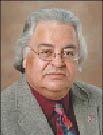 |
|
Martinez: “The community colleges still won’t take the type of people that CET will take.” |
Replicating successful program models remains one of the most daunting missions in youth work. A new study of a federally touted job training program explains how factors both within and beyond an organization’s control – from model fidelity to changes in the national economy – can get in the way.
Preparing to celebrate its 40th anniversary this October, the Center for Employment Training (CET) model started off with great promise. Since its founding in San Jose, Calif., CET has trained and found jobs for more than 110,000 people ages 17 to 50 as mechanics, retail managers, computer technicians, food service workers and medical administrators in cities throughout the United States. (See “San Jose CET Trains the Hard-Core Poor,” March/April 1994.) Its innovative methods include engaging youth full-time in a work-like setting, embedding life skills and literacy lessons into training, and allowing trainees to progress toward skill mastery at their own pace.
Two federal evaluations of jobs programs in the 1980s – the JOBSTART Demonstration for high-school dropouts and the Minority Female Single Parent Demonstration – found that CET in San Jose was the only program that produced large, positive effects on employment rates and earnings for those high-risk groups.
But some of the founding principles that served CET well in the 1970s and 1980s – including a commitment to serving the most disadvantaged people and forging symbiotic relationships with local employers – muddied attempts to replicate the model in the 1990s.
The final report on the evaluation of CET’s replication efforts – “The Challenge of Repeating Success in a Changing World,” released in 2005 by the research group MDRC – found that only four of 12 sites that participated in the study fully replicated the CET model.
Worse, even among those four high-fidelity sites, CET training had only a negligible effect on employment and earnings among young people ages 17 to 21.
“Replicating something like San Jose CET is very difficult, because it was grown organically,” said Cynthia Miller, a senior research associate at MDRC and the lead author of the 2005 evaluation report. “It’s hard to plop this model down and expect it to meld into the community.”
“Hear! Hear!” say youth workers who struggle to implement by-the-book model programs – in many cases under vastly different conditions from those under which the model was first conceived and tested.
Cloning Success?
The U.S. Department of Labor took notice of CET’s performance in the JOBSTART Demonstration, and in 1992 gave CET a $1.2 million grant to provide training and technical assistance to youth employment training programs to implement its model.
From 1995 to 1999, MDRC assigned 1,400 youth at 12 replication sites to either a “program” group accepted into CET or a control group with no access to CET. Researchers measured the youths’ job training hours, certificate completion rates, employment rates and earnings for various periods after their assignments. The data collection ended in 2004.
By the time the evaluation was under way, several dozen organizations had applied for and received funding under the Job Training Partnership Act of 1983 to launch CET model programs as pilot projects, said Max Martinez, CET-San Jose’s director of contracts and overseer of site replications during the 1990s.
The replication sites in the evaluation were obligated to use the CET model for a minimum of two years. “But they had other structures, other programs that were running, so the dedication to the full establishment of the model was not necessarily as solid as it could have been,” Martinez said.
While most of the evaluation sites implemented at least some CET components, many suffered from staff turnover and funding losses that led to departures from the model. Four of the 12 sites participating in the evaluation eventually closed, and three others struggled to stay open.
One of the most frequent problems was fully implementing the job development component of the model.
CET-San Jose was launched in the 1960s with the backing of community employers, who provided instructors, machinery and technical assistance. Forty years later, CET-San Jose still relies on its long-standing relationships with employers who hire its graduates and advise the program on job growth trends in certain industries.
While Martinez says all CET sites are supposed to “do labor market surveys and incorporate employers into their program,” MDRC researchers found that several replication sites failed to develop such relationships and couldn’t provide participants with jobs after they completed the program. Some sites trained participants for jobs in industries that had little demand for workers, the report said.
Other socioeconomic changes dampened the effects of training on participants’ employment and earnings at the replication sites.
“It was a very different environment [during replication] than it was back when CET participated in JOBSTART,” Miller said. “There are a lot more education and training opportunities for youth now … and the community college system – particularly in California, where all of the high-fidelity sites were – is strong.”
Miller points out that the youth in the evaluation’s control group, who did not have access to CET, had no trouble getting training in other places. “Back then [during the JOBSTART evaluation], these types of proprietary training institutes didn’t exist, and now they’re all over the place,” she said.
The MDRC report also cites the inclusion of “a broader and more employable group of youth” in the replication evaluation, including high school graduates – a group excluded from the JOBSTART study. The presence of employable youth in the replication study control group increased the likelihood that those youth would find jobs without the benefit of CET training, thus minimizing the differences in the employment rates of the two groups.
Researchers underscore the fact that the CET replications began at a time of strong economic growth and low unemployment, and that, by the late 1990s, employers may have valued short-term training less than other types of training, including education.
Struggle for Relevance
As predicted in the concluding remarks of MDRC’s evaluation, such changes – and the negative effect they’ve had on the employability and earning capacity of CET graduates – have left CET struggling for relevancy and funding.
In 1997, at the height of the replication evaluation, the CET model was operating in 45 centers in 15 states. In recent years, Martinez said, “we’ve had to do radical things to keep afloat. We’ve had to shut down a lot of centers.”
Today, the CET model is used at 27 centers in eight states and Washington, D.C. “The money simply is not there as it was in past decades,” Martinez said.
Miller said the researchers concluded that the large positive results from the earlier JOBSTART evaluation were focused on a very disadvantaged segment of youth. To regain its early success, he said, perhaps CET needs “to move back to training more disadvantaged youth.”
That’s fine with Martinez, who said CET’s philosophy has always been to serve those who are “most in need, least likely to succeed.” He said CET-San Jose has been talking with officials from the California Department of Corrections and Rehabilitation about having CET do job training in its youth facilities.
“The community colleges still won’t take the type of people that CET will take, and a lot of other programs won’t take them either,” Martinez said.
“If we don’t serve them, who will?”






























